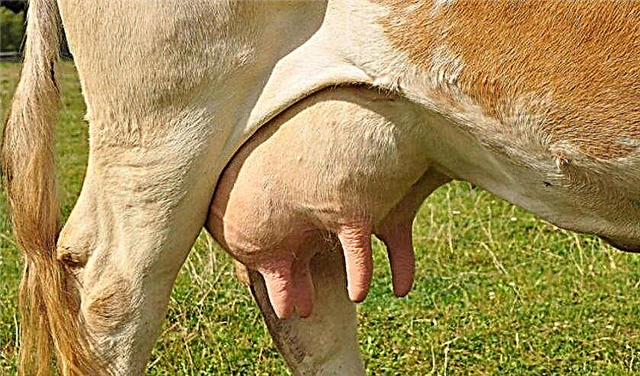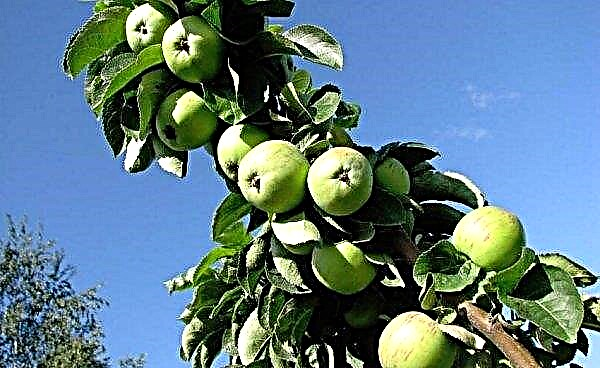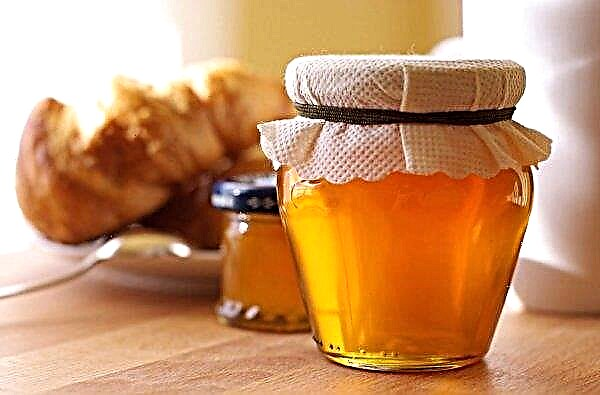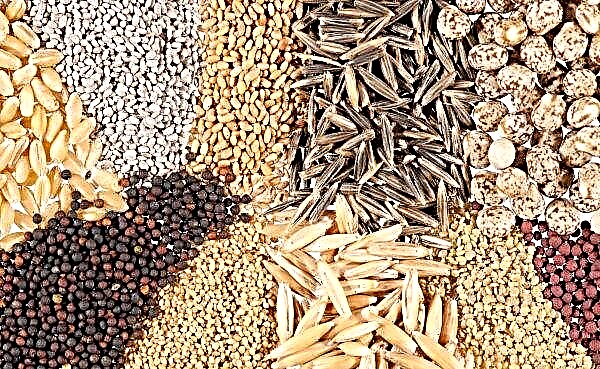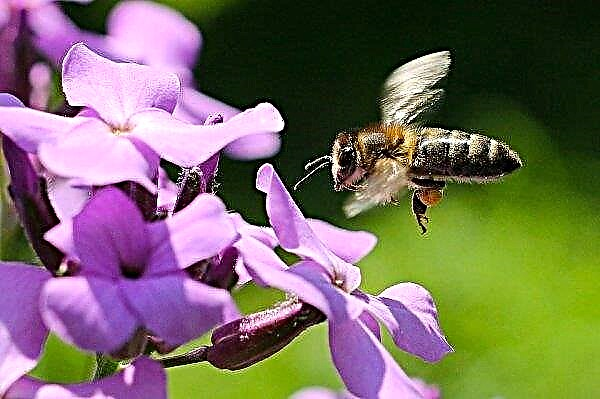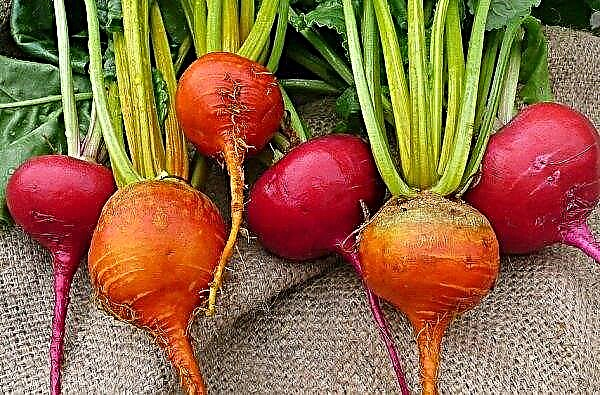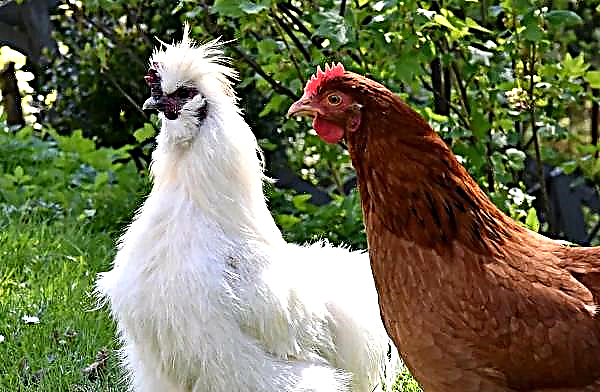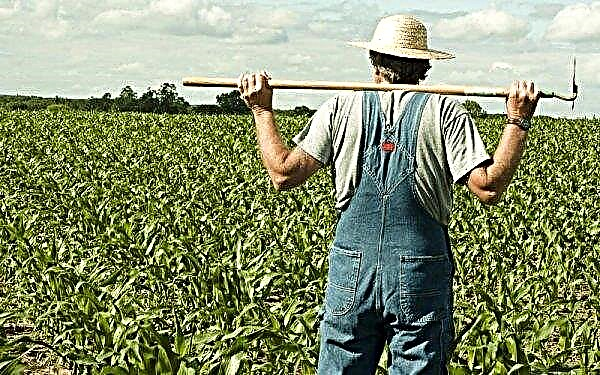Yucca Garden is represented by a beautiful evergreen plant, which amateur gardeners often plant in flowerbeds and garden plots. To successfully grow yucca in open ground, you need to consider the rules of planting, choosing a territory and leaving in different seasons.
Botanical description of the plant
Yucca is a perennial tree-like shrub from the Agave family. The plant has very hard and long flow of xiphoid shape, growing in a spiral and assembled into one magnificent rosette, extending from the base. The color of the leaf blades is green or bluish. Leaves can be smooth, with pronounced veins or have spines at the end.
The length of the leaves is from 25 to 100 cm, the width rarely exceeds 8 cm. A very long (1-3 m) peduncle grows in the center of the leaf rosette, on which flowers in the form of bells appear. The flowers are white or cream in color, up to 6 cm in diameter. Flowering lasts 2-3 weeks, in late June or early July.
The fruits are medium-sized (5 cm in diameter) round dry seed boxes in which many small seeds ripen.
Area of distribution
Yucca comes from the subtropics of Central and North America, but due to its ability to get used to a cooler climate, it is grown almost throughout the globe.
The flower does not grow only in countries where the cold lasts all year. The plant is distributed throughout Europe as ornamental shrubs in greenhouses, botanical gardens, and is often used in landscape design.Did you know? Fruits on a plant appear only in the homeland of yucca, where the only rare species of butterflies pollinating flowers is common.
Planting seedlings in the open ground
For effective flower cultivation in the open ground, it is necessary to choose the right place and plant the plant in compliance with the main recommendations.
Seat selection
Yucca prefers to grow in well-lit areas, it is better if they are located on a hill. If you plant a shrub in a shady area - this can lead to thinning of leaves and friability of the leaf rosette. Lowlands are not suitable for planting a flower, and territories near water bodies with dense, moist soil.
Sandy loam is a suitable soil for flower cultivation; the flower also grows well on black soil, with the addition of river sand. The bottom of the pit is covered with a thick layer of drainage to avoid stagnation of water during heavy rains or regular watering.
Scheme and Depth
Depending on the age and size of the plant, as well as its root system, prepare a pit for planting. A hole is dug 2 times more than the root system, usually 60-70 cm in diameter and 50 cm in depth. Between each plant it is better to maintain a free space of 2 m, so that during the growth process, they do not interfere with each other.
Care Tips
Any plant grown in the garden requires attention, so consider the main recommendations for caring for yucca.
Watering
The flower does not require very frequent watering, it must be watered abundantly, but only when the top soil layer dries well. On average, watering should be 1-2 times in 2 weeks, during the rainy season less often. The yucca is necessarily watered under the root (type of irrigation - artificial, mechanical), with water at room temperature. During a period of drought, leaves are recommended to be moistened with a hose.

It is possible to determine that a plant needs watering in appearance: if the leaves are straightened, and the threads along the edge of the leaf are slightly twisted, you do not need to water it, if the leaves begin to curl and sag, the watering is required.
Fertilizer application
Yucca does not require frequent fertilizing, for normal development, it is enough to apply them only in the spring. Mineral fertilizers that do not contain nitrogen are used for top dressing. The first time the yucca is fed in May, at the beginning of active leaf growth, the second time after flowering.
 Top dressing is purchased in a specialized store, special fertilizers of the same name are produced for yucca. It is necessary to use top dressing, according to the recommendations on the package, since depending on the manufacturer, the method of preparation and use of nutrient solutions may vary.
Top dressing is purchased in a specialized store, special fertilizers of the same name are produced for yucca. It is necessary to use top dressing, according to the recommendations on the package, since depending on the manufacturer, the method of preparation and use of nutrient solutions may vary.
Loosening and weed control
In order not to interfere with the normal development and growth of the plant, as well as provide oxygen access to the root system, it is recommended to regularly loosen the soil and remove weeds. Under the bush, weed removal is best done manually, near the bush - with a hoe.
Important! Loosen the soil after each watering, so as to prevent cracking of the upper layer, which can injure the roots.
Untimely removal of weeds can lead to decay of the lower leaves due to high humidity, since the soil, under a thick layer of weed vegetation, will not have time to dry out.
Weed removal under the bush must be carried out in protective clothing and tight gloves, as the Yucca leaves are very sharp and can severely injure the skin. This information should be transferred to plain text, and more interesting information should be added to the block.
Trimming and thinning
Trimming yucca is recommended to rejuvenate an old plant or to save specimens affected by frost or rot.
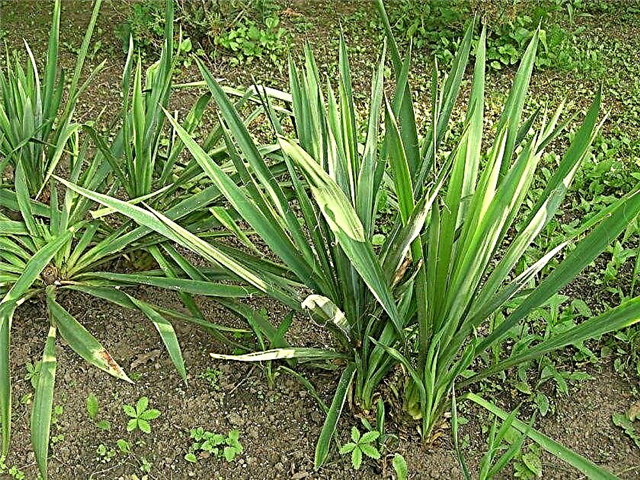
Pruning should be carried out in the spring, after the shelter was removed. Yucca has only one growth point, therefore, cutting the stem, its further growth will be impossible. After trimming the stem, new leaf rosettes will form at the base.
In order for pruning to be effective and not harm the plant, the following rules must be observed:
- 2 days before the planned pruning, the yucca must be watered.
- Trimming the trunk is done with a clean and sharp knife, completely removing old leaves, and touching the living tissue of the stem (5 cm).
- When the slices dry (after 30 minutes), they are treated with crushed charcoal.
- The upper part of the stem, which is visible on the surface of the soil, is covered with garden varieties to protect against rot and disease.
Thinning yucca is recommended in the spring, as dense bushes winter better. Performing thinning remove old, weak sockets. On one bush you need to leave from 3 to 5 outlets. Cut off excess sockets with a sharp knife, removing leaves at the base.
Shelter for the winter
Although the yucca has adapted to the cool climate, it is covered for the winter to prevent freezing or partial freezing of the stem, which will cause lack of flowering.
Shelter should be at the end of October, on the day of the procedure, the weather should be dry and sunny.
The shelter process is as follows:
- All leaves of the plant are collected in a bunch, forming a tight "column", and tied with twine along the entire length of the leaves. Thus, the “crown” of the stem will be completely closed and protected from frost.
- Next, you should wrap the plant with agrofibre or burlap, fixing with a twine.
- A wooden box without a bottom is installed on top of the entire structure and a little bit of it is added to fix it.
- Lay fir branches or leaves around the box and wrap it over plastic wrap, which you fix on all sides with bricks.
Important! Young plants in spring suffer greatly from an overabundance of melt water, therefore, the snow accumulated around the plant must be removed in a timely manner.
Do I need a transplant
Yucca grows well in one place and does not require transplants. If you decide to move the yucca to another place, then it is better to do this while the plant is still young (up to 3 years), when the root system has not grown much.
Older specimens cannot be transplanted due to a very large root system without root injury, therefore, the risk of death after a similar movement of the bush increases.
Breeding methods
You can propagate a yucca in different ways, so we will consider which method is the simplest and most effective.
Dividing the bush
When the yucca is transplanted, some parts can be separated for reproduction. On adult maternal plants, small offspring with roots periodically appear.
They can be easily separated without the use of additional tools and planted as an ordinary young plant. After planting, the young specimen is shaded a little so that a quick rooting occurs.
Cuttings
For propagation, apical cuttings are often used, which are separated from the young leaf in the spring. The size of the cut stalk should be no more than 10 cm, large parts root worse. Cut the stalk should be at a slight angle, and sprinkle the cut with crushed charcoal. The stalk is left in the shade to dry for 5 hours.
Planting is carried out in a wet peat-sand substrate to a depth of 5 cm. The capacity for each cuttings is selected separately, 8 cm in diameter. For quick rooting, the stalk is covered with a transparent plastic film and watered regularly so that the soil is slightly moist all the time.
The pot is placed on a well-lit window sill so that direct sunlight does not fall on the stalk. After rooting, a film is removed from the plant. You can plant a plant in open soil only next spring, when a strong root system is formed.Seed cultivation
Seed cultivation of yucca is common in the homeland of the plant, since it is possible to collect seeds only after pollination of flowers. Yucca seeds are imported to other countries, but it is quite difficult to grow them for a very long time. In February, seeds are sown in small separate containers, 2 seeds each in a peat-sand mixture, pouring drainage to the bottom.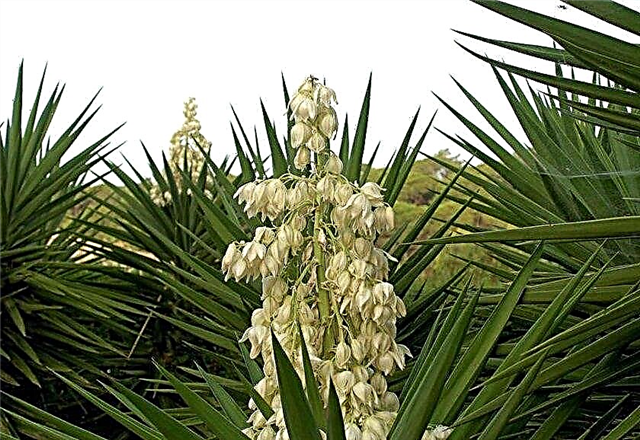
Close the seed material into the soil by 1-2 cm. From above, cover the container with plastic wrap, removing it daily for ventilation for 1 hour. Contain a container on the western or eastern well-lit window at a temperature of + 20 ... + 25 ° С.
First water the soil with spray from the sprayer once a week. When shoots appear, the film is removed and watering begins under the root. You can plant a plant in open ground only 2 years after sowing, when it grows a little and builds up a strong root system. Suitable time for landing in open ground is the beginning of May.
Application
Yucca is a universal plant and is used not only for decorative purposes. It is used to create compositions in landscape design, for the manufacture of fiber. Yucca is also popular in folk medicine.
In landscape design
Since yucca is an evergreen, it is actively used in landscape design. Even in the absence of flowering, the plant well complements the composition, is a beautiful background for low-growing annuals. Yucca is used in group plantings in flower beds, gardens, greenhouses.
In folk medicine
Yucca is not only an original ornamental plant, but a valuable medicinal raw material used in folk medicine.
Yucca has a very rich chemical composition, therefore it has a therapeutic effect on the body:
- steroid saponins - have a fatal effect on fungi and inflammatory processes, resist edema and allergies;
- antioxidants - establish metabolic processes in the body;
- anthraquinones - act as a laxative, resist inflammatory processes;
- zinc - participates in the synthesis of proteins and fats, positively affects the restoration of bone tissue;
- selenium - antioxidant, resists viruses, stimulates the immune system;
- vitamin A - synthesizes enzymes, establishes a hormonal background;
- vitamin C - synthesizes collagen, boosts immunity.
Medicinal raw materials are used in the treatment of:Important! The use of yucca for treatment is prohibited for people who suffer from urolithiasis and cholelithiasis.
- arthritis;
- skin diseases;
- polyps in the intestine;
- prostatitis;
- flatulence.
To cure skin diseases, make a therapeutic ointment with yucca leaves, which smear the affected areas of the skin (2-3 times a day) until completely cured.
To prepare the ointment use:
- melted pork fat - 100 g;
- fresh yucca leaves - 100 g.
Cooking process:
- The leaves are thoroughly washed, dried and pulverized.
- Ghee is mixed with the vegetable portion and boiled for 6 hours on low heat until all excess liquid has evaporated.
- The resulting mixture is filtered through gauze in several layers.
- The liquid is poured into a glass container and sent to the refrigerator for solidification.
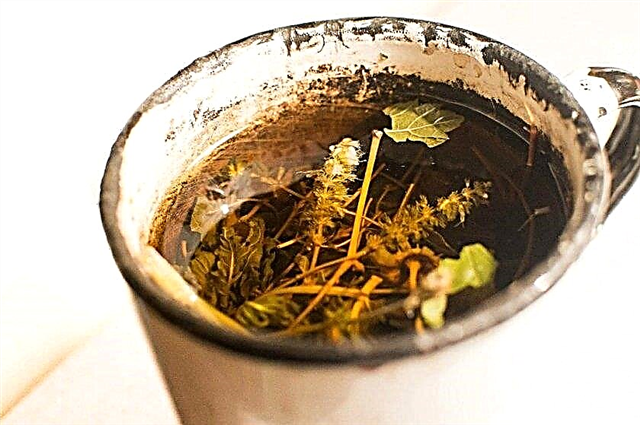
To prepare a decoction use:
- dried chopped yucca root - 2 tsp;
- dried burdock - 2 tsp;
- dried hydrangea - 2 tsp;
- dried Manchu aralia - 2 tsp;
- water - 0.5 l.
Cooking process:
- The drug mixture is poured with water and brought to a boil.
- Cook for 15 minutes on low heat, set aside and insist 2 hours.
- The broth is filtered and poured into a glass jar, stored in the refrigerator.
In the textile industry
The green parts of yucca are used in the production of durable fibers, so the plant is sown on an industrial scale in the United States. The resulting fibers as an additive to the cotton composition are used in the production of jeans fabrics, which makes them as wear-resistant as possible. The fibers produced are very strong, therefore they are popular for cable production and fishing tackle production.
Did you know? A close relative of yucca - agave is the plant from which they make the world famous alcoholic drink - tequila.
Thus, yucca garden is a universal plant that is used everywhere to decorate a yard or garden. To get a beautiful healthy plant, you must follow the care recommendations and timely perform seasonal procedures.


